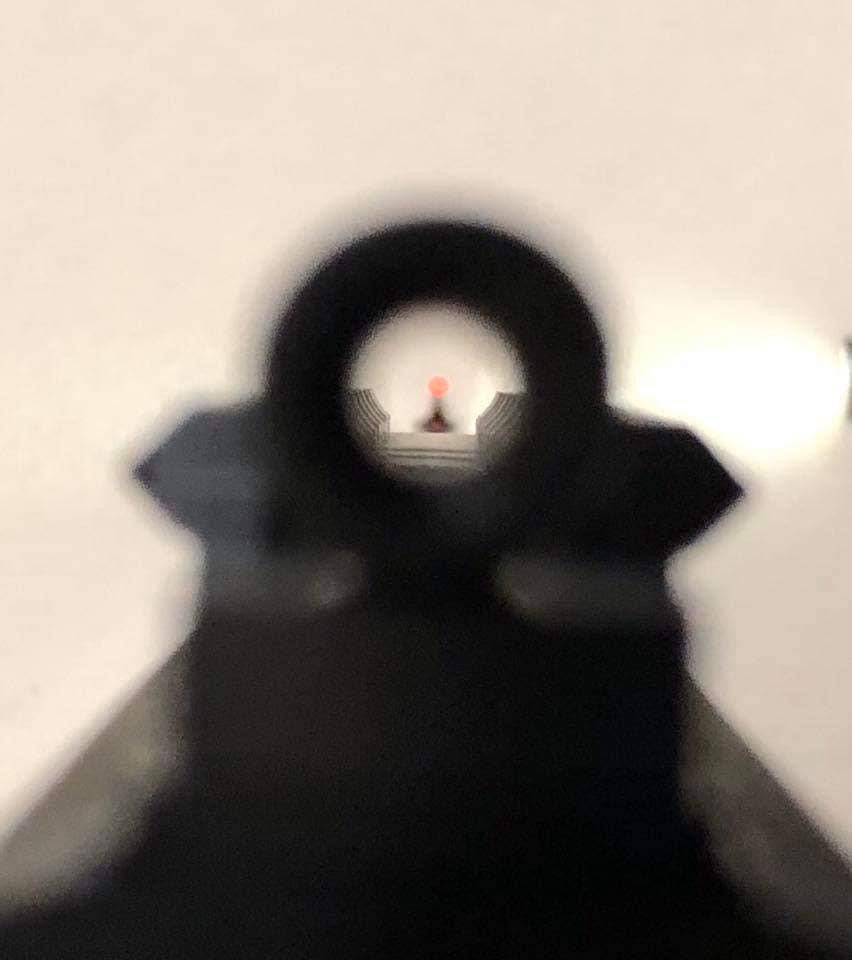
Levergun Bench Technique
I wrote this a couple years ago. Thought it might be helpful to post it again:
Some have asked what the best bench technique is for sighting in a lever gun and how to properly use a peep/aperture/ghost ring rear sight. Let me share what works for me.
Seated comfortably at the bench, rest the back of your forend hand on a bag at a comfortable height. Elbows on the bench, rifle butt normally against your shoulder with no rear bag.
Lever guns have a number of design features that can make a difference in accuracy. With a magazine tube fastened to the barrel and a forend hanger of some sort, we have potential for some stresses created as the barrel heats at a different rate than the magazine tube creating some stress between the magazine tube, it's attachment, and the receiver. This can all make a difference.
Add a sling to the mix and we have one more potential troublemaker. This is especially true if you wrap up in the sling like we would with a target rifle sporting a free-floated barrel on a rigid one-piece stock. Another issue may be created if you have a sling with half a box of cartridges inserted into it. Nothing about that setup is going to help with accuracy.
If your rifle is equipped with a scope, cheek weld is very important. It needs to be comfortable, consistent, and as low as possible. The most troublesome scope mounting attachments of our day are the high rings or one piece scope mounts intended for flat top AR platforms. These have no place on a lever gun. It is just simply not the best setup no matter how hard we try to convince ourself it's okay. Without a good cheek to stock relationship consistency in aiming and under recoil is difficult. A butt cuff with a cheek riser may help this some but lower is ALWAYS better.
Iron sights including aperture or peep sights need a low, cheek to butt stock comb, relationship. Your cheek should feel normal right down on the stock as you look through the sights. A consistent cheek weld is important. Some stocks like the 1860 model have quite a bit of drop making a cheek weld a little more difficult. It’s important with those rifles to pay attention where the cheek is on the stock and replicate that for every shot.
When using a peep/aperture/ghost ring rear sight, all of your attention needs to be on the front sight. Never look at the rear sight or try to align the front inside the hole. Anything that draws your attention to the rear sight (like a brass ring, crosshairs, or fiber optics around the hole) is actually going to detract from your accuracy. All attention on the front sight and forget about the rear sight, just look through it. The human eye will center the front sight in the rear hole automatically and subconsciously. If you are trying to align the front sight inside the hole the magic of the aperture sight is lost. Part of the speed advantage of an aperture sight is never having to see it, just through it.
Focus on the front sight, it's alignment on the target, breath control, trigger squeeze, follow through. See if that doesn't shrink your groups a little bit. Don't get wigged out if the front sight isn't perfectly sharp. A smaller aperture will help it be crisper but is still not necessary as you know where that front sight is even if it is a little blurry. Just go with it.
A fiber optic front is not best for bullseye paper target accuracy but is pretty good when shooting at game. A square-topped post/patridge blade Is inherently more accurate than a bead or a fiber optic since you will be shooting to the top of a crisp square blade rather than covering with a bead. Fiber optics tend to "fuzz" a little which makes things a bit more difficult.
Think about the facts: All competition target shooters using aperture sights use a precision crisp round hole in the rear and either a square crisp top post or a ring type front sight. (Works well when shooting at round paper bullseye's) They do not use anything on or in the rear sight to help align inside the rear hole.
Those are my best pieces of advice for better accuracy while shooting the lever action rifle.
Hope that helps
Andy
